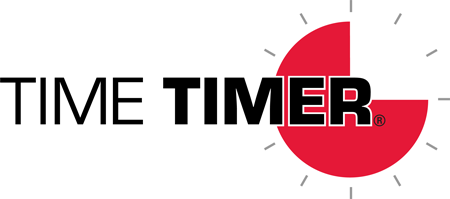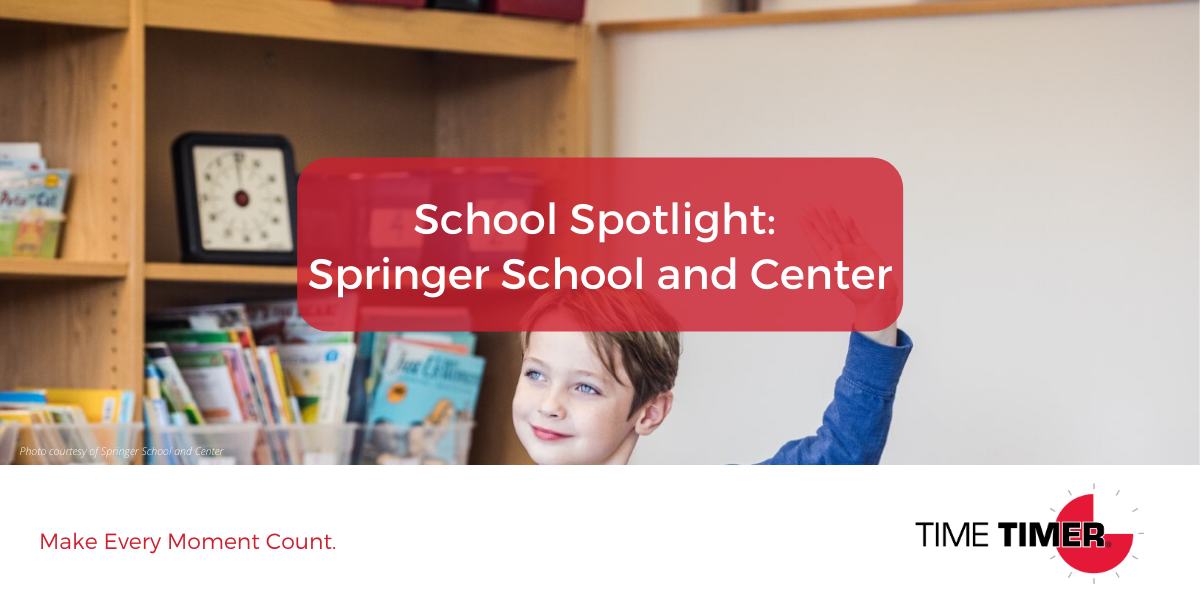School Spotlight: Springer School and Center
This is the second post in our series featuring amazing schools around the country, and we’re taking a deeper look at the Springer School and Center in Cincinnati. It’s focused on helping children with learning disabilities achieve success. Read on to find out what makes the school so special and why they have Time Timers in all the classrooms. Have a school you’d like to see featured? We’d love to hear: Email support@timetimer.com
The School: Springer School and Center
What It Is: Springer is a private independent day school for grades 1 through 8 specifically designed for students with learning disabilities. More specifically, think kids with average to above average intelligence who are underperforming in reading, writing or math. Many of these children struggle with attention or have Attention-Deficit/Hyperactivity Disorder (ADHD). Roughly 200 kids attend the school each year.
In addition to the school, there’s a center staffed with experts who help educate teachers and parents in the community about learning disabilities in children. Springer also runs a summer program that reaches out to kids in the community with multi-week math and writing classes.
The Goal: “We offer a program that understands a child struggling to learn academics in their current setting,” says Carmen Mendoza, Director of Learning Programs. Usually, a family and child find it tough to fit into their current setting and discover the school by word of mouth. Springer provides a curriculum and support strategies that help young people with learning disabilities succeed in the classroom and beyond.
How It Works: In many ways, Springer looks just like any other school. They have art, music, gym, teachers and classrooms. But if you look closer, you’ll notice a small ratio—two teachers in each class for 10 to 14 students. Kids are often being instructed in small groups, and they’re active participants in figuring out the best learning strategies for themselves. “The adults are trying to understand the kids and really dig deep as to why it might be hard for the child,” Mendoza says. The faculty and staff seek to understand each and every child.
Mendoza describes the school’s curriculum as humanistic—the child is at the center. “All the decisions we’re making about how we’re teaching is derived through the child being at the center,” she says. “What’s best for the child?” To carry this out, teachers work together to meet each child’s individual needs. It’s also a multi-graded school with the ability to mix ages and provide each student instruction at the right level.
Teachers understand that everyone learns differently, and while there’s a task everyone needs to get through, not every student will get through it the same way. “Our teachers have great relationships with our students, they are able to have conversations with students about their learning which leads to successful students,” Mendoza says. “It’s important that we learn how students learn, so we can talk with them about what they’re experiencing.”
Success Stories: “It’s too numerous to count,” Mendoza says. “Every spring we have a graduation commencement ceremony. All of our students are invited. Most of them give speeches about the growth and the steps they’ve taken in this challenge and how they feel ready for the next challenge.” The school hears from alumni often, and in fact, Springer’s current board president is an alum.
What Students Think: “We sometimes use the word healing,” Mendoza says “Students almost feel like they’re healing when they’re here. Of course, that takes time. It’s not instant or magic. Students begin to feel less anxious and more like they have people on their team. They know they can express their frustrations and get help. Instead of it being an excuse or ‘I can’t do something,’ it turns into, ‘This is really hard. What can I do to learn?’”
Why It Matters: “The families often times are carrying a lot of the child’s anxiety and living through the struggle with them, and they don’t even realize it until their child is at Springer for a while,” Mendoza says. “They feel a relief almost to the point of guilt. My child is doing homework on their own, and they really understand it. It should give them much-needed family time back.”
Inspiration to Action: How can you help kids who are struggling in your own classroom? Try these tips from Springer:
Set a timer: Directly teaching about time and schedules helps breaks things down into manageable steps. At Springer, every classroom has a Time Timer. Teachers might set them for a writing process (a couple minutes for brainstorming followed by 5 or 10 minutes for writing) or to break down the steps in a math problem. This visual cue can work for the whole class or an individual student.
Talk about expectations: If you have students with ADHD who struggle to focus, try talking with them to make sure they understand expectations—specifically, what behavior is needed for the task at hand. “Say, ‘Hey, I noticed you weren’t focused on this activity,’” Mendoza says. “It’s also really important to talk with family members to share observations about the child when you noticed distracted or hyperactivity behavior.”
Like this post? Check out our first school spotlight on Take Two Academy.

